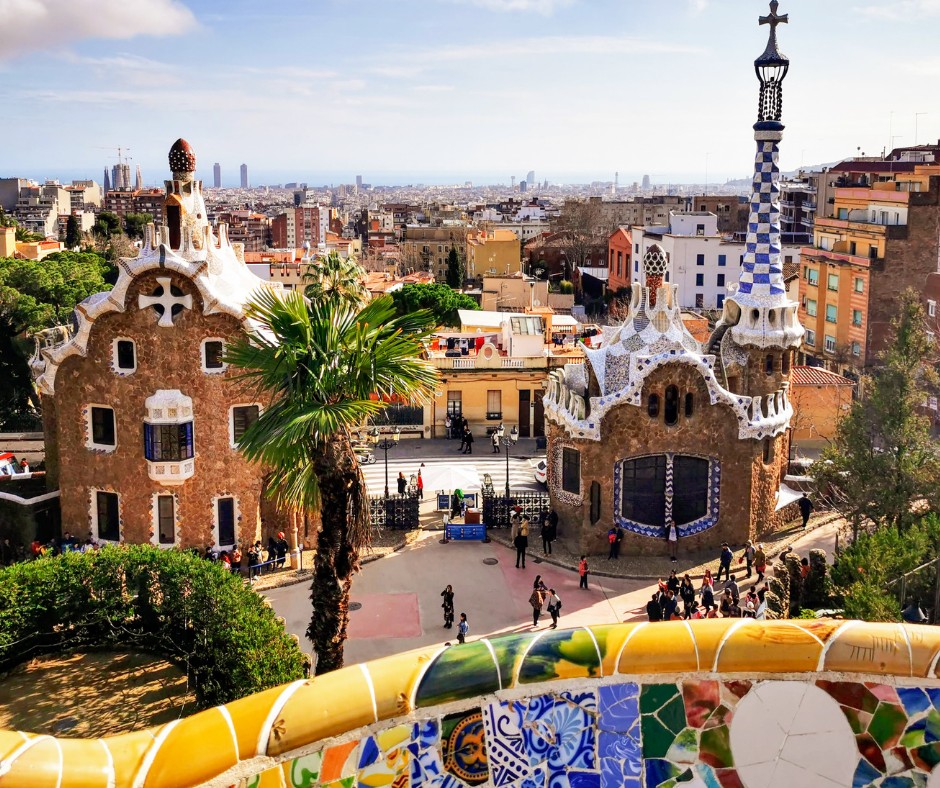Balancing Tourism and Liveability: Sustainable Planning in Barcelona
Located on the shore of the Mediterranean sea, Barcelona is one of the most densely populated urban areas in Western Europe

Cultural Heritage
Barcelona has made a significant contribution to world culture, boasting eight UNESCO World Heritage sites, seven of which are remarkable creations by Gaudí. This city has been home to numerous globally renowned contemporary artists, including Miró, Dalí, and Tàpies.
Barcelona embraces multiculturalism, with 20.2% of its residents hailing from abroad, particularly from Italy, China, and Pakistan. It’s a linguistic melting pot, with over 200 languages spoken, but the city officially recognises two languages: Catalan and Spanish. Furthermore, it houses Catalonia’s most vital self-governing institutions, such as the Generalitat de Catalunya and the Catalan Parliament.
Barcelona also holds the title of a UNESCO City of Literature, reflecting its longstanding association with international publishing. The city’s 41 libraries serve as central cultural hubs, drawing 6.4 million visitors annually. Additionally, Barcelona boasts 59 theatres and 57 museums scattered throughout its streets.
Embracing Change
Barcelona has transitioned away from its industrial past in recent decades, diversifying into sectors like media, biotechnology, energy, and design. It plays a pivotal role in Spain’s creative industries, employing 135,000 Barcelonins, constituting 12.2% of the city’s workforce, in 2018. Barcelona remains the economic engine of the Catalan region, contributing over 50% of its workforce and GDP.
While tourism contributes significantly to the city’s income, sustainable planning is vital to maintain Barcelona as a liveable place for its local population. Initiatives like the Art Factories ensure that artists can thrive in the city while preserving its unique character.
The city’s Design Hub (DHUB), established in 2012, serves as a flagship site for the creative industries. This multifunctional and multidisciplinary hub aims to position Barcelona’s emerging design sector as a European leader. It’s part of District 22@, a project that transformed nearly 500 acres of abandoned industrial land in the Poblenou neighbourhood into a high-tech innovation district, emphasising the preservation and adaptive reuse of industrial-era buildings.

The Role of the Policymaker
Barcelona City Council plays a central role in the city’s cultural landscape, with regional and national bodies providing additional funding and support. The city views culture as a fundamental right and an integral part of social development, exemplified by initiatives like the Barcelona Cultural District, which brings free cultural activities to neighbourhoods across the city. This approach values both international and local perspectives, making culture accessible to residents while fostering the presence of international artists, whether through long-term residencies or occasional performances. Cross-disciplinary programs are favoured, facilitated by the integration of culture, science, and education under the Deputy Mayor for Culture since mid-2019.
The Future
Barcelona’s cultural programming aims to unite people and reduce inequality, granting all citizens a voice in its democracy and access to the rich cultural tapestry that the city offers.
Images copyright © Getty Images/Canva




